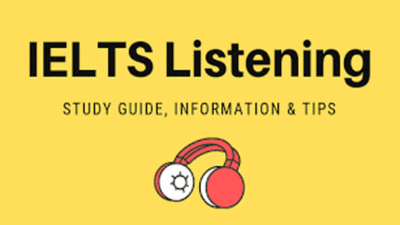8 Tips on IELTS Listening
We are going to take a glance at 8 tips on IELTS listening, which is the first part in the IELTS test. To receive a high IELTS overall band score, you have to work on another language skill, listening. In the two other articles, “How to score 9 band in IELTS speaking test?” and “6 Tips on IELTS Speaking“, we talked about speaking. But now, let’s turn to IELTS listening and have a quick look at it.
The general format of the IELTS listening test
This part of the test takes 30 minutes of the whole written test, which is two and a half hours. The length of the listening test is the same in the both IELTS test formats, academic and general. There are four sections in the listening test; each includes 10 questions, so it comes to 40 questions in total. You hear the recordings, spoken in a variety of accents, once only except the example at the beginning of the test in section one, which is played twice.
Section 1:
includes a two-person conversation going on a daily social situation such as talking about accommodation, tour booking and …
Section 2:
includes a monologue arranged in a daily social setting such as lectures on local facilities, the history of public places, receptions at a conference and …
Section 3:
includes a conversation of about four people arranged in an academic setting. For example, a university professor and a student are talking about a homework assignment, a group of people are planning a project and …
Section 4:
includes a lecture by a professor at the university or at a conference on a variety of topics such as a preservation program, natural disasters and …
While listening to the IELTS recording, you will answer the questions by writing them down in the booklet. At the end of test, you will have 10 minutes to transfer your answers to the answer sheet.
To get ready for IELTS, we first need to know it well; then we’ll be able to answer most of the questions and get our desired mark. In this regard, we introduced some of the best IELTS sources helping you achieve your score.
Here are some tips to help you get ready for the IELTS Listening section
- Right after hearing the first word, you can start reading the IELTS listening questions. Here is the time you have to do pre-listening which means reading the questions before the actual listening stars. This time will help you grow familiar with the questions. The faster you can read the questions, the more questions you will read and the less surprised you will become while listening. It must be done actively meaning that you should underline the keywords and even rewrite some of those down in your own mother tongue regarding the question type. By the time you hear “Now turn to section 1”, you need to come back to section 1.
- At the beginning of each section, you will be given a while to read the questions.This will help you get ready to follow the tape, identify the question types and guess the possible answers, so you won’t get confused and keep concentrated while listening.
- Write the answers in short. Note taking is the skill in listening that you have to master, particularly if want to take the IELTS test, so you will know how to write briefly to save as more time as possible, and, thus, how to keep following the IELTS recording when you hear the answer and want to write it. You are given 30 seconds to write your shorts in full.
- After completing each section, it is best to take a look at the next section and read the questions there rather than being concerned about the past section.
More tips:
5. Note the word limit. In each section of the IELTS listening test, there is an instruction regarding the number of words needed to answer the questions. You have to follow the instruction. If the instruction is saying, “No more than two words”, you must not write more than two words. Writing more than two words will be meant no marks even if your words include the correct answer.
6. You may be asked to write the words spelled out in the tape. To do this, you need to know how the English alphabets are pronounced. In different accents, for example, the letters “W, X or R” might be pronounced differently from what you’ve heard or expected.
7. Sometimes you have a list of options to choose from. You need to know the difference in these questions and the way to deal with them. Reading the options, if you do not know what to do, will be wasting time.
8. If there are any listening questions you can’t answer, skip them and move on to the next question, or even to the next IELTS listening section. This will help you stay calm and positive. At the end while transferring your answers to the answer sheet, you can go back to those questions and make a guess.
If you are looking for a site to receive a preparation for IELTS, click here.
What was said:
In this article, we talked about IELTS listening and gave some tips for preparing for the exam.


 فارسی
فارسی
